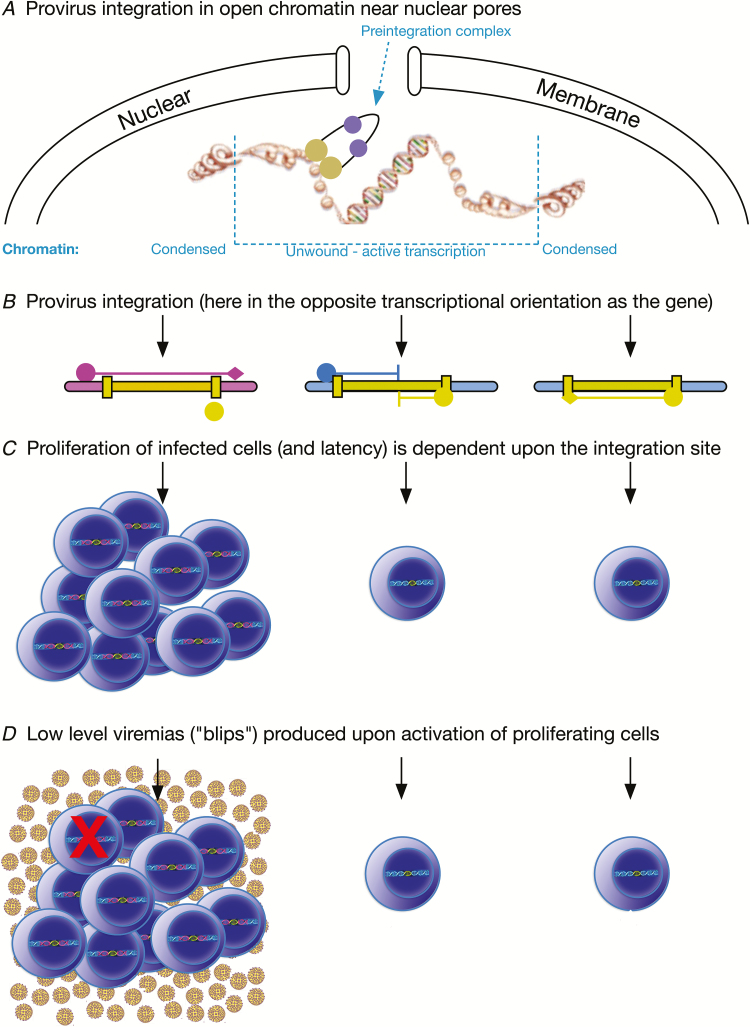Figure 2.
Summary of findings and hypotheses discussed in this review. A, Provirus integration is favored in transcriptionally active genes near the nuclear membrane and pores. B, Human immunodeficiency virus (HIV) integration can result in the provirus and gene being in the same, or as shown here, the opposite transcriptional orientation. Subsequently, several scenarios for host gene and provirus transcription are possible, with 3 shown: Left, host gene transcription is initiated (pink circle) upstream of the provirus and travels through the provirus then terminates downstream (pink diamond), interfering with transcription of the proviral 5’ LTR (yellow circle). Middle, transcription is initiated both within the cellular gene and the provirus, leading to a transcriptional collision and incomplete expression of both transcription units. Right, transcription within the provirus is initiated and terminated correctly, yielding virions. C, Proliferation of infected cells as well as viral latency is associated with specific integration sites. D, Low-level viremias can result from proliferating infected cell populations, most likely from synchronous activation of a specific clonal cell population, perhaps by its cognate antigen. An immune-suppressive milieu may develop by HIV integrations affecting the function of regulatory T cells (Treg) cells that limit killing (red X) of virus-expressing cells, as well as cancerous cells (not depicted).

